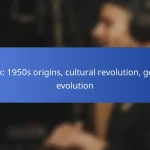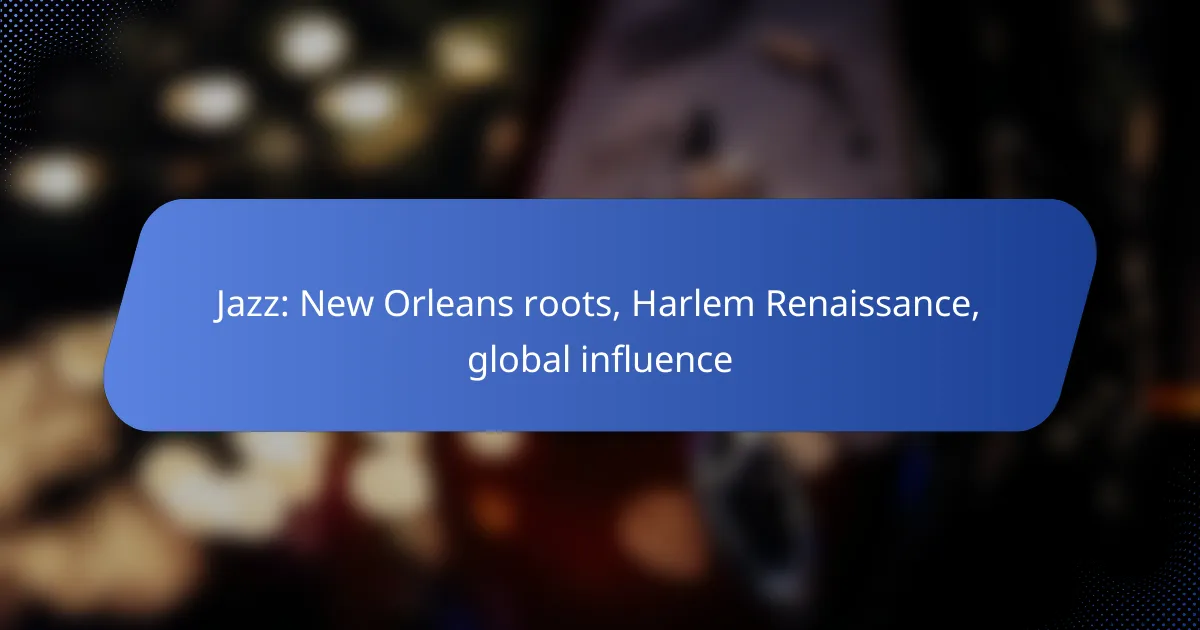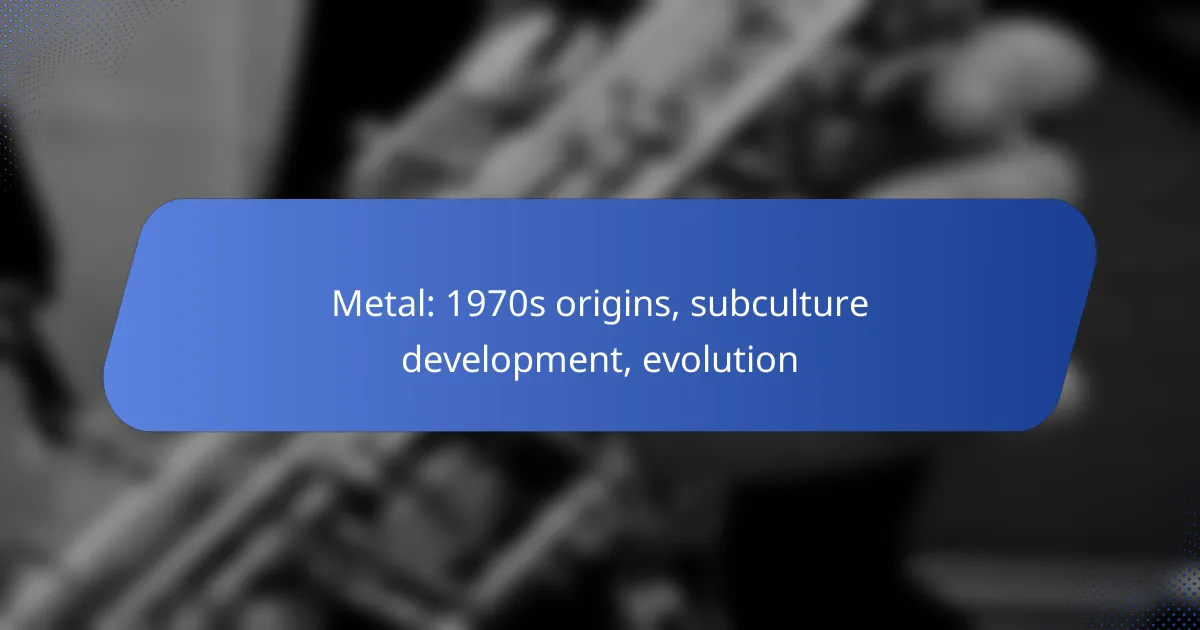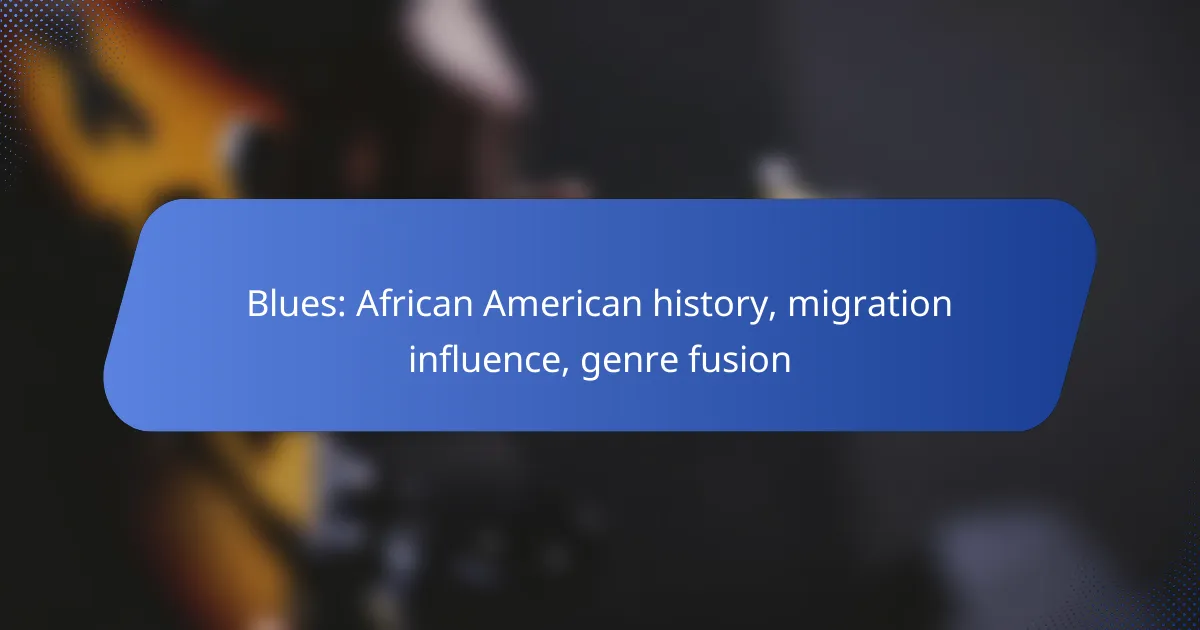The evolution of electronic music in the 20th century was marked by groundbreaking experimentation that introduced innovative sound techniques and new instruments, setting the stage for future developments. As the digital age emerged, advancements like MIDI technology and digital audio workstations revolutionized music creation and distribution, fostering a vibrant landscape of genre diversification. This rich tapestry of sounds reflects the dynamic interplay of cultural influences and technological progress in the realm of music.

How did 20th century experimentation shape electronic music?
The experimentation of the 20th century laid the groundwork for electronic music by introducing innovative sound techniques, avant-garde influences, and the development of new instruments. This period saw a diversification of genres, driven by cultural movements and technological advancements that transformed music production and consumption.
Innovative techniques in sound synthesis
Sound synthesis techniques emerged as a cornerstone of electronic music, enabling composers to create unique auditory experiences. Methods such as additive synthesis, subtractive synthesis, and granular synthesis allowed for the manipulation of sound waves in unprecedented ways. These techniques facilitated the creation of complex textures and timbres, expanding the sonic palette available to musicians.
For example, subtractive synthesis, which involves filtering harmonics from a sound source, became widely used in synthesizers like the Moog and Roland models. This innovation not only changed how music was produced but also influenced the genres that emerged, such as techno and ambient music.
Influence of avant-garde composers
Avant-garde composers played a pivotal role in shaping electronic music by pushing the boundaries of traditional music forms. Figures like John Cage and Karlheinz Stockhausen experimented with chance music and electronic sounds, inspiring future generations of musicians to explore unconventional approaches. Their work often blurred the lines between music and noise, challenging listeners to rethink their perceptions of sound.
Their influence is evident in the way contemporary electronic artists incorporate experimental techniques into their compositions, often merging classical elements with modern technology to create innovative soundscapes.
Development of electronic instruments
The 20th century witnessed significant advancements in electronic instruments, which revolutionized music creation. Instruments like synthesizers, drum machines, and samplers became widely accessible, allowing musicians to explore new creative avenues. The introduction of MIDI (Musical Instrument Digital Interface) in the 1980s further enhanced the ability to control and synchronize multiple devices.
These developments enabled artists to produce complex arrangements without the need for traditional ensembles, leading to the rise of solo electronic performers and producers. The affordability and portability of these instruments democratized music production, making it possible for a broader range of artists to enter the field.
Impact of cultural movements
Cultural movements of the 20th century significantly influenced the evolution of electronic music. The rise of counterculture in the 1960s and 1970s, for instance, fostered a spirit of experimentation and rebellion that resonated with electronic music’s ethos. Genres like disco and punk embraced electronic elements, further integrating them into mainstream music.
Additionally, the globalization of music in the late 20th century introduced diverse influences, leading to genre diversification. Artists began to blend electronic music with styles from around the world, creating hybrid genres that reflect a rich tapestry of cultural sounds and rhythms.

What are the key milestones in the digital age of electronic music?
The digital age of electronic music has transformed the landscape through several key milestones, including the introduction of MIDI technology, the rise of digital audio workstations, and the emergence of online music distribution. These developments have significantly influenced how music is created, produced, and shared globally.
Introduction of MIDI technology
MIDI, or Musical Instrument Digital Interface, revolutionized electronic music by allowing different instruments and devices to communicate with each other. Introduced in the early 1980s, MIDI enabled musicians to control synthesizers and sequencers from a single device, streamlining the production process.
This technology allows for precise control over musical parameters like pitch, velocity, and duration, making it easier for artists to compose and arrange music. Today, MIDI remains a standard in music production, with most digital audio workstations supporting it.
Rise of digital audio workstations
The advent of digital audio workstations (DAWs) in the late 1990s marked a significant shift in music production. DAWs like Pro Tools, Ableton Live, and Logic Pro provide comprehensive environments for recording, editing, and mixing audio, allowing artists to produce high-quality music from their computers.
These platforms offer a range of features, including virtual instruments, effects processing, and automation capabilities. Musicians can now create entire tracks without the need for expensive studio time, making music production more accessible than ever.
Emergence of online music distribution
The rise of the internet has transformed how music is distributed and consumed, with platforms like Spotify, SoundCloud, and Bandcamp leading the way. Artists can now share their work globally without relying on traditional record labels, democratizing the music industry.
Online distribution allows for immediate access to a vast audience, but it also presents challenges such as competition and revenue generation. Musicians must navigate streaming royalties and marketing strategies to effectively promote their music in this digital landscape.

How has genre diversification occurred in electronic music?
Genre diversification in electronic music has emerged through the fusion of various styles, regional influences, and the development of distinct subgenres. This evolution reflects the dynamic nature of music production and consumption, leading to a rich tapestry of sounds and cultural expressions.
Blending of genres like EDM and hip-hop
The blending of electronic dance music (EDM) and hip-hop has created a vibrant crossover that appeals to diverse audiences. Artists often incorporate hip-hop beats, rap vocals, and electronic elements to produce tracks that resonate across both genres.
Collaborations between EDM producers and hip-hop artists have become increasingly common, resulting in chart-topping hits. This fusion not only broadens the listener base but also encourages innovation in sound design and production techniques.
Regional influences in Australia
Australia has seen a unique evolution in electronic music, shaped by its local culture and music scene. Genres like Australian house and techno have developed, often incorporating indigenous sounds and themes, which adds a distinct flavor to the music.
Festivals such as Splendour in the Grass and Beyond the Valley showcase local talent and foster genre diversification by featuring a mix of electronic acts alongside rock and pop artists. This blending highlights the country’s diverse musical landscape and encourages cross-genre experimentation.
Subgenres and their characteristics
Electronic music encompasses a wide range of subgenres, each with its own unique characteristics. For instance, techno is known for its repetitive beats and synthesized sounds, while house music often features a more melodic and soulful approach.
Other subgenres like dubstep and trance emphasize heavy bass lines and atmospheric elements, respectively. Understanding these characteristics can help listeners appreciate the nuances of electronic music and guide them in discovering new styles that suit their tastes.

What criteria should be considered when exploring electronic music genres?
When exploring electronic music genres, consider characteristics such as sound design, rhythm, and cultural influences. Understanding these elements will help you appreciate the diversity and evolution of electronic music.
Understanding genre characteristics
Each electronic music genre has distinct characteristics that define its sound and style. For instance, techno often features repetitive beats and synthesized sounds, while house music is known for its soulful vocals and four-on-the-floor rhythm. Familiarizing yourself with these traits can enhance your listening experience.
Additionally, consider the historical context of each genre. Genres like ambient and drum and bass emerged from different cultural movements and technological advancements, influencing their unique sounds. Recognizing these backgrounds can provide deeper insights into the music.
Identifying influential artists
Identifying key artists within each electronic genre is crucial for understanding its development. Pioneers like Kraftwerk and Brian Eno laid the groundwork for various styles, while contemporary figures such as Daft Punk and Aphex Twin continue to shape the landscape. Listening to their work can help you grasp the evolution of electronic music.
Explore collaborations and influences among artists as well. Many electronic musicians draw inspiration from each other, leading to genre-blending and innovation. This interconnectedness can reveal how genres evolve over time.
Evaluating production techniques
Production techniques play a significant role in defining electronic music genres. Techniques such as sampling, looping, and the use of synthesizers create unique soundscapes. Understanding these methods can help you appreciate the craftsmanship behind the music.
Consider the tools used by producers, such as digital audio workstations (DAWs) and hardware synthesizers. Each genre may favor specific equipment, affecting the overall sound. For example, house music often utilizes drum machines, while ambient music may rely on software synthesizers for lush textures.

What are the future trends in electronic music?
Future trends in electronic music are heavily influenced by technological advancements, particularly in artificial intelligence and immersive experiences. These developments are reshaping how music is created, consumed, and experienced, leading to greater genre diversification and innovative soundscapes.
Integration of AI in music production
The integration of AI in music production is transforming the creative process by automating tasks and generating new sounds. AI tools can analyze vast amounts of data to identify trends, suggest melodies, or even create entire compositions, allowing artists to focus on their unique vision.
Producers can use AI-driven software to enhance their workflow, such as using algorithms for sound design or mastering tracks. This technology can save time and reduce costs, making high-quality production accessible to a wider range of musicians.
However, relying too heavily on AI can lead to a loss of personal touch in music. It’s essential for artists to balance AI assistance with their creativity to maintain authenticity in their work. Experimenting with AI while retaining a human element can yield innovative results.










